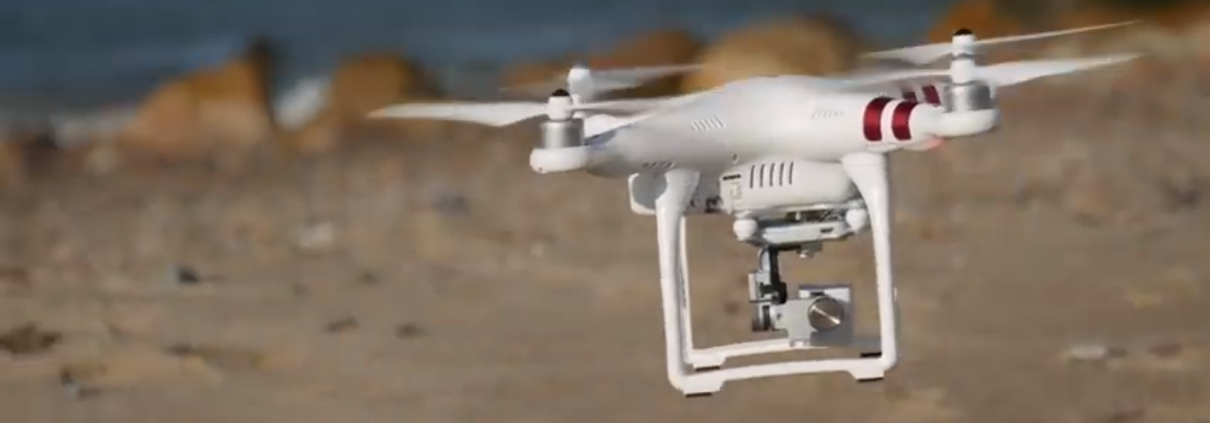Student Bridges Sky & Sea through Coastal Erosion Drone Mapping
Matt Mullin, a rising senior at American University, spent his summer conducting coastal erosion research with drone technology. His project, funded by the Massachusetts Space Grant Consortium and taking place at MIT Sea Grant, will act as a bridge between the two organizations.
His fieldwork and resulting analysis will hopefully improve the accuracy of coastal erosion mapping done by drones. “If we can get a handle on how to use drones and equip them with other sensors, then you could use them for any environmental research you want,” says Mullin. Research areas spanning from pollution to agriculture would benefit from the impacts of better-equipped drones.
Organizations, which traditionally spent years and thousands of dollars on mapping coastal areas, can now complete the same amount of work in a single afternoon with a relatively cheap drone. Advantages such as these seem to be attracting the attention from members of the scientific community at large. “That’s where the environmental industry is going,” claims Mullin. The Woods Hole Oceanographic Institution and United States Geological Survey are already using drones to map the coast of Mullin’s hometown of Sandwich, MA.
The beaches of his hometown are what sparked Mullin’s interest in coastal erosion. “They’re the same beaches I’ve been growing up with my whole life,” Mullin shares when reflecting on the erosion plaguing the coast of Sandwich. He believes that his town must seek a coastal resilience plan, a plan that would be far more effective with the data that drones yield. Mullin’s project, and any action that may arise from it, is a triumph of the partnership between Space and Sea Grant, with NASA embracing its roots of aeronautical engineering and NOAA embracing its coastal implications.
When not uniting research organizations, Mullin spends most of his time, unsurprisingly, on the beach. On the weekends, he works on The Ice Cream Boat, a business that is exactly what it sounds like. Essentially a floating ice cream truck, it serves ice cream to other boats along the coast while making pit stops at neighboring beaches. “I think I have the two best jobs possible right now,” jokes Mullin. He will soon be graduating from American University with a bachelor’s degree in Environmental Science and a minor in Applied Physics. The research done at MIT Sea Grant will prove essential when he returns to Washington, D.C., where he works part-time on similar projects at NASA’s Goddard Space Flight Center.
Mullin continues to approach the problem of coastal erosion enthusiastically. Hopeful for the change that drones may bring about, he eagerly awaits any chance for a flight that clear skies and low winds would allow.




